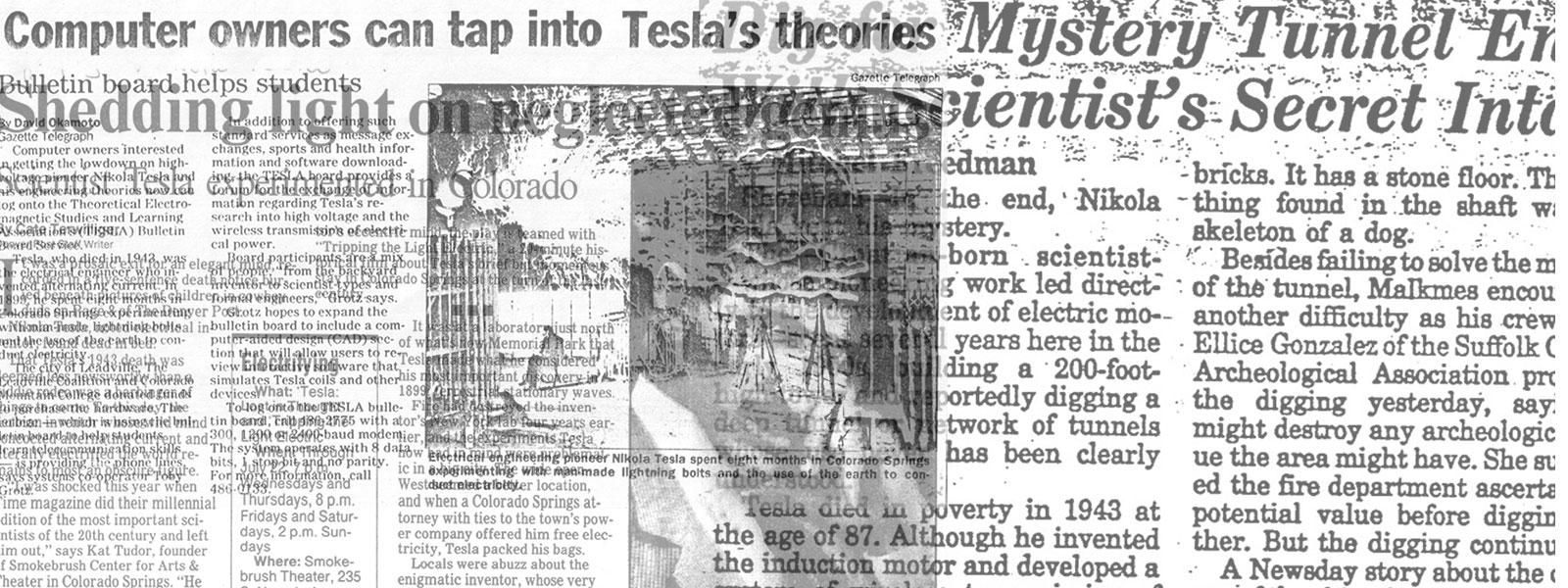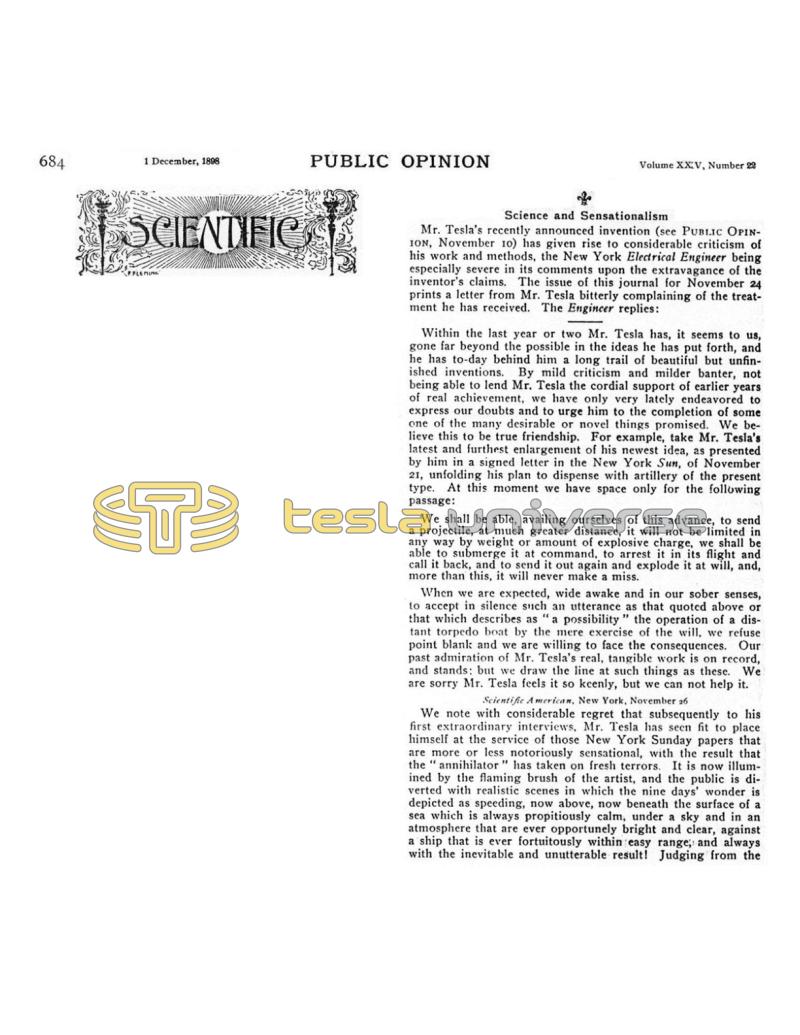
Nikola Tesla Articles
Science and Sensationalism
Mr. Tesla’s recently announced invention (see Public Opinion, November 10) has given rise to considerable criticism of his work and methods, the New York Electrical Engineer being especially severe in its comments upon the extravagance of the inventor’s claims. The issue of this journal for November 24 prints a letter from Mr. Tesla bitterly complaining of the treatment he has received. The Engineer replies:
Within the last year or two Mr. Tesla has, it seems to us, gone far beyond the possible in the ideas he has put forth, and he has to-day behind him a long trail of beautiful but unfinished inventions. By mild criticism and milder banter, not being able to lend Mr. Tesla the cordial support of earlier years of real achievement, we have only very lately endeavored to express our doubts and to urge him to the completion of some one of the many desirable or novel things promised. We believe this to be true friendship. For example, take Mr. Tesla’s latest and furthest enlargement of his newest idea, as presented by him in a signed letter in the New York Sun, of November 21, unfolding his plan to dispense with artillery of the present type. At this moment we have space only for the following passage:
We shall be able, availing ourselves of this advance, to send a projectile, at much greater distance, it will not be limited in any way by weight or amount of explosive charge, we shall be able to submerge it at command, to arrest it in its flight and call it back, and to send it out again and explode it at will, and, more than this, it will never make a miss.
When we are expected, wide awake and in our sober senses, to accept in silence such an utterance as that quoted above or that which describes as “a possibility” the operation of a distant torpedo boat by the mere exercise of the will, we refuse point blank and we are willing to face the consequences. Our past admiration of Mr. Tesla’s real, tangible work is on record, and stands; but we draw the line at such things as these. We are sorry Mr. Tesla feels it so keenly, but we can not help it.
Scientific American, New York, November 26
We note with considerable regret that subsequently to his first extraordinary interviews, Mr. Tesla has seen fit to place himself at the service of those New York Sunday papers that are more or less notoriously sensational, with the result that the “annihilator” has taken on fresh terrors. It is now illumined by the flaming brush of the artist, and the public is diverted with realistic scenes in which the nine days’ wonder is depicted as speeding, now above, now beneath the surface of a sea which is always propitiously calm, under a sky and in an atmosphere that are ever opportunely bright and clear, against a ship that is ever fortuitously within easy range, and always with the inevitable and unutterable result! Judging from the comments of the scientific and technical press, we are not alone in our expressions of regret that any one of Mr. Tesla’s undoubted ability should indulge in such obvious and questionable self-advertisement. That the author of the multiphase system of transmission should, at this late day, be flooding the press with rhetorical bombast that recalls the wildest days of the Keely motor mania is inconsistent and inexplicable to the last degree.
The facts of Mr. Tesla’s invention are as few and simple as the fancies which have been woven around it are many and extravagant. The principles of the invention are not new, nor was Tesla even their original discoverer. While the present application of these principles is novel, there is nothing whatever in the device to warrant the sweeping claims which have been made in regard to its destructive powers. The connecting cable in the dirigible torpedo is only one of many insuperable obstacles to its success. Mr. Tesla has removed (or rather believes that he has) this one defect; let him now apply himself to mastering the others. Before he announces his ability to blot the navies of the world out of existence, let him answer a few pertinent questions, as follows:
If the torpedo must be seen to be controlled, and is scarcely visible at a distance of over a mile, even in a calm sea, how, in view of the great range, rapidity, and accuracy of modern rifles, is the operator to keep within striking distance of the enemy? If the course of the torpedo can with difficulty be followed in calm weather, how will it be traced when the surface is disturbed even by a moderate sea, to say nothing of more boisterous water? Furthermore, what becomes of its accuracy in thick or foggy weather? The apparatus employed by Tesla is extremely sensitive to shock; how then will it fare amid the terrific concussion of a modern sea fight? If one of these weapons should be lost sight of in its course, does it not at once threaten friend and foe alike, and is not the operator himself in danger of being incontinently “hoist by his own petard”? Lastly, and most pertinent question of all: What is to prevent the enemy from installing a transmitter on his own ship and himself sending out waves to act upon the receiver in the torpedo? We fail to find any provision made for this contingency, either in the patent or in any of the published interviews of the inventor. With a transmitter in the hands of the enemy the proper sequence of the motions of the torpedo could be destroyed, and the control of it prevented.
